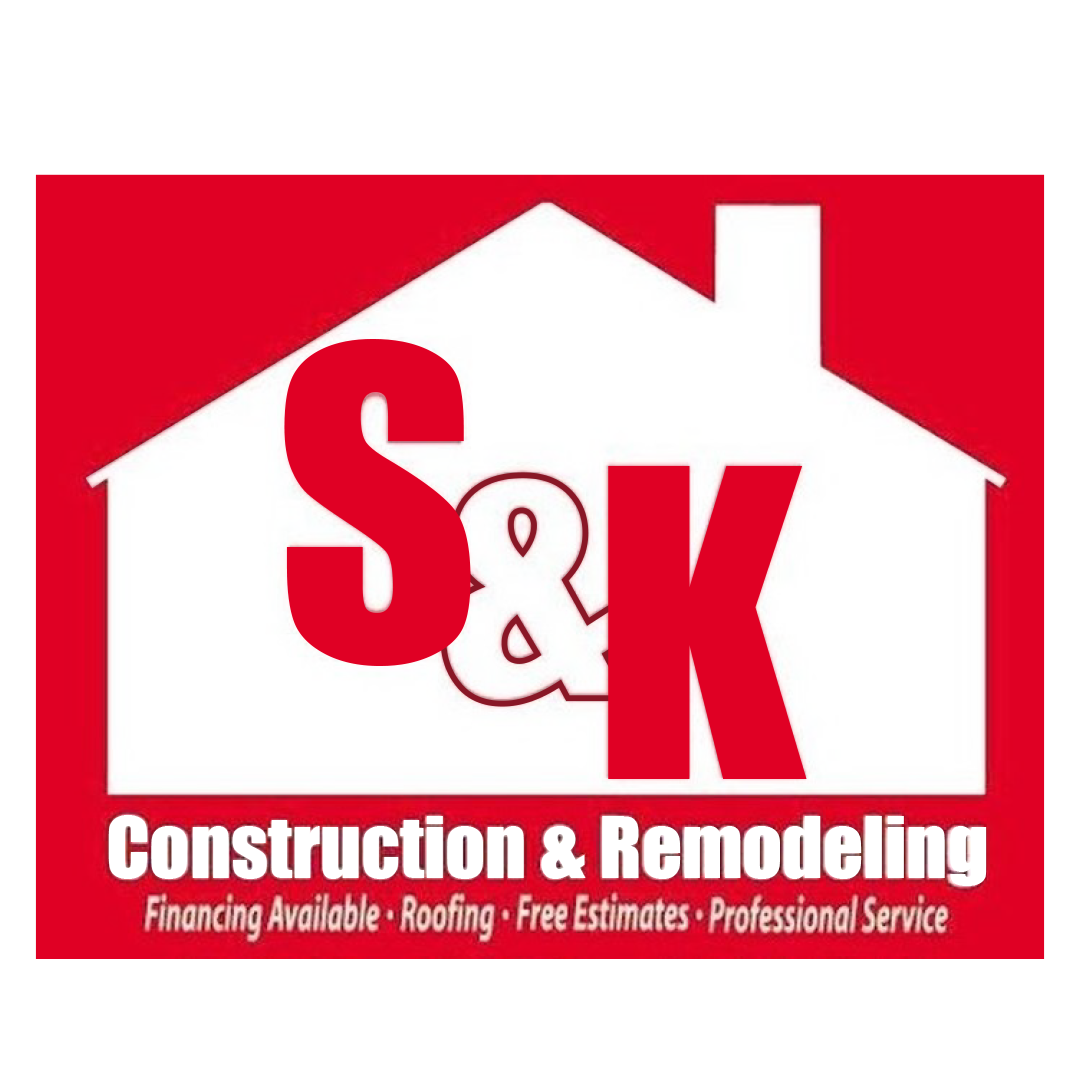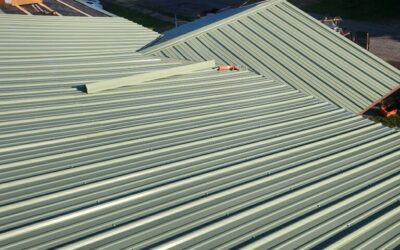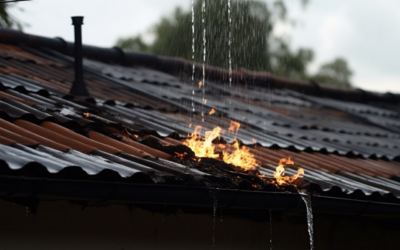How Can I Tell Where My Roof Is Leaking?
A Step-By-Step Guide for Northeast Ohio Homeowners
Nothing feels quite as alarming as spotting a mysterious water stain on your ceiling—especially when you can’t see any damage on your roof. If you’re asking “How can I tell where my roof is leaking?,” you’ve come to the right place. At S&K Construction and Remodeling LLC, based in Jefferson, Ohio, we’ve helped countless homeowners throughout Ashtabula County, Youngstown, Cleveland Heights, Lakewood, and beyond pinpoint and repair even the most elusive leaks.
In this comprehensive guide, we’ll cover:
- Why Roof Leaks Are So Tricky to Locate
- Early Warning Signs of a Hidden Roof Leak
- Step 1: Indoor Inspection—Gather Clues
- Step 2: Attic Investigation—Follow the Trail
- Step 3: Exterior Roof Examination—Know the Hotspots
- Step 4: The Garden-Hose Test—Simulating Rain
- Step 5: Advanced Detection Tools
- Common Leak Sources and How to Spot Them
- DIY vs. Professional Inspection—When to Call S&K
- Seasonal Maintenance Checklist
- Why Early Detection Saves You Money
- About S&K Construction and Remodeling LLC
- Financing and Insurance Support
- FAQs
- Take Action: Schedule Your Free Inspection
1. Why Roof Leaks Are So Tricky to Locate
A roof leak rarely lines up perfectly beneath the point of interior water damage. That’s because water entering your roof often travels along rafters, beams, or the underside of roof decking before dripping into your home. It can move several feet or even across roof planes before you see it inside.
Key challenges:
- Water migration: Runs downhill (but not always directly toward the interior stain).
- Intermittent behavior: Some leaks only appear during wind-driven rain or snowmelt.
- Multiple entry points: Aging roofs can have several weak spots.
- Condensation confusion: Moisture from poor attic ventilation can mimic a leak.
Understanding these challenges will help you methodically track down the true source—and avoid wasting time chasing phantom leaks.
2. Early Warning Signs of a Hidden Roof Leak
Even before you climb into the attic or onto the roof, your home may be giving you clues. Watch for:
- Ceiling stains: Yellow, brown, or gray rings on drywall or plaster.
- Bubbling paint or wallpaper: Moisture pushes coatings outward.
- Musty or moldy odors: Indicates chronic moisture—often from a slow leak.
- Sagging drywall or ceiling tiles: Structural softening from water.
- Wet or compressed insulation: Visible in the attic or from soffit vents.
- Rust on metal fixtures: Nails, wiring, or HVAC components in the attic.
If you notice any of these, start documenting—take photos, mark spots with chalk, and note when stains appear or grow.
3. Step 1: Indoor Inspection—Gather Clues
Begin your detective work inside the house:
- Locate all stains. Walk every room under the suspect area and mark every spot.
- Note timing and weather. Did the stain worsen after a heavy storm or during a thaw?
- Check light fixtures and attic openings. Moisture often drips along wiring or falls around attic hatches.
- Inspect closets. Smaller, enclosed rooms can hide stains on side walls or ceilings.
Pro Tip: Keep a simple home-inspection notebook. Date every entry and sketch rough roof-plan diagrams showing stain locations. This visual map helps when you move to the attic and roof.
4. Step 2: Attic Investigation—Follow the Trail
If you have an accessible attic, it’s your next best vantage point:
- Dress safely: Wear gloves, mask, and sturdy shoes.
- Use a reliable flashlight: Inspect rafters, decking, and insulation.
- Follow water stains uphill: Moisture travels toward the peak before dripping.
- Look for mold or mildew: Black or green spots on wood indicate recurring dampness.
- Check insulation condition: Wet, matted insulation often pinpoints leak zones.
Sometimes you’ll see a small hole, cracked underlayment, or light peeking through roof sheathing—that’s your entry point. Mark it with chalk or tape.
5. Step 3: Exterior Roof Examination—Know the Hotspots
Once you’ve narrowed the attic clues, head outside—preferably with a partner:
a. Inspect Shingles
- Missing or broken shingles: Leaves gaps where water can seep.
- Cracked or cupped shingles: Aging laminate loses its weather seal.
- Blistered or bubbled areas: Trapped moisture beneath granules.
b. Examine Flashing
Flashing is the metal trim around chimneys, vents, and valleys. Look for:
- Rust or holes
- Lifted or crimped edges
- Separation from the roof surface
c. Check Roof Penetrations
- Vent boots: Cracked rubber around pipe vents.
- Skylights: Cracked or dried-out sealant.
- Chimney/chase caps: Missing mortar or corroded flashing.
d. Assess Valleys and Eaves
- Valleys collect and channel water—look for granule loss or debris buildup.
- Eaves can hide damaged underlayment, especially if gutters are clogged.
Safety First: If your roof is steep or slippery, use sturdy ladders and always have a spotter. For complex or high roofs in Cleveland, Mentor, or Willoughby, consider a professional drone or scaffold inspection.
6. Step 4: The Garden-Hose Test—Simulating Rain
When you still can’t find the leak during dry weather, a controlled water test helps:
- Seal off attic access. Close your inspection notebook map to one quadrant.
- Soak small sections. Starting at the lowest edge, have a helper spray the roof for 2–3 minutes.
- Move upward. After testing each section, check the attic for drips.
- Repeat as needed. Systematically “zone” your roof until you see the leak.
Warning: Never use a power washer, which can strip granules and damage flashing.
7. Step 5: Advanced Detection Tools
If traditional methods fail, professionals deploy specialized equipment:
- Infrared (IR) cameras: Reveal cooler, moisture-laden spots beneath roofing materials.
- Moisture meters: Measure moisture content in decking, insulation, and drywall.
- Thermal hygrometers: Identify high-humidity zones that lead to condensation.
- Drone inspections: Safely photograph steep pitches, chimneys, and complex rooflines.
At S&K Construction and Remodeling LLC, as an Owens Corning Preferred Contractor, we integrate IR scanning and drones to pinpoint leaks in Ashtabula County homes without unnecessary roof tear-offs.
8. Common Leak Sources and How to Spot Them
Even if you can’t see obvious shingle damage, these are the most frequent leak culprits:
| Leak Source | How to Spot It |
|---|---|
| Flashing | Rust, separation, cracked sealant. |
| Vent boots | Brittleness, splits, missing clamps. |
| Chimney flashing | Gaps in mortar, deteriorated step flashing. |
| Roof valleys | Granule loss, debris buildup, cracked underlayment. |
| Skylights | Fogged panes, cracked gaskets, pooled water. |
| Nail pops | Raised nails or holes in shingles. |
| Ice dams (winter) | Icicles along eaves, frozen water back-up. |
| Cedar shake roofs | Warping or splitting shakes. |
| Gutter backups | Overflow staining under fascia. |
Regularly inspecting these hotspots—especially after severe weather—greatly improves your chances of catching leaks early.
9. DIY vs. Professional Inspection—When to Call S&K
DIY is fine for:
- Simple shingle replacements
- Minor sealant re-caulking around vents
- Clearing debris from valleys and gutters
Call a pro when:
- You can’t locate the leak after attic/roof checks
- You need specialized tools (IR camera, drones)
- Flashing or underlayment replacement is required
- Your roof is steep, high, or structurally complex
- You want an insurance-grade inspection report
As a locally owned Jefferson, OH, roofing company, S&K Construction and Remodeling LLC offers free, no-obligation leak inspections throughout Youngstown, Concord, Madison, and Chagrin Falls. We’ll diagnose the problem quickly and provide a transparent, written estimate.
10. Seasonal Maintenance Checklist
Proactive maintenance can prevent many leaks:
| Season | Checklist |
|---|---|
| Spring | Clear winter debris, inspect for ice-dam damage, clean gutters. |
| Summer | Check for blistered shingles, inspect attic ventilation. |
| Fall | Clean gutters, trim overhanging branches, inspect flashing. |
| Winter | Monitor for ice dams, ensure soffit vents are unobstructed. |
Perform these tasks annually—ideally before and after the harsh Northeast Ohio winters—or schedule our seasonal maintenance plan to keep your roof in peak condition.
11. Why Early Detection Saves You Money
- Minimizes structural damage: Saves on framing and decking replacement.
- Reduces interior repairs: Prevents drywall, paint, and flooring damage.
- Prevents mold remediation: Mold cleanup can cost thousands.
- Extends roof lifespan: Early repairs stop small issues from escalating.
- Lowers insurance premiums: Well-maintained roofs often qualify for discounts.
A small leak repair (often under 10% of roof cost) can avoid a full reroof—which might run $8,000–$15,000 for an average Northeast Ohio home.
12. About S&K Construction and Remodeling LLC
- Headquartered in Jefferson, Ohio
- Proud Owens Corning Preferred Contractor
- Licensed, bonded, and insured
- 5-Star Google ratings from homeowners in Cleveland, Willoughby, Lakewood, and Youngstown
- Specializing in roofing repair, full replacements, siding, gutters, and attic ventilation
- Serving all of Ashtabula County, Lake County, and Cuyahoga County
We combine local expertise with manufacturer-backed warranties to deliver durable solutions and exceptional customer service.
13. Financing and Insurance Support
Roof repairs and replacements can be unexpected. To ease the financial burden, we offer:
- Flexible financing plans with low monthly payments
- 0% introductory APR options
- Work directly with insurers for storm or hail damage claims
- Free insurance claims assistance: documentation, photos, and adjuster coordination
If your leak resulted from storm damage, let us help you secure the coverage you deserve—often at no out-of-pocket cost.
14. Frequently Asked Questions
Q1: How long does it take to find a hidden leak?
A: Simple leaks may be found in under an hour; complex cases requiring IR scanning or hose tests can take several hours.
Q2: Will detecting a leak require tearing off my entire roof?
A: Rarely. We aim for targeted repairs—only replacing shingles, flashing, or underlayment in the affected area.
Q3: Can condensation be mistaken for a leak?
A: Absolutely. Poor attic ventilation often leads to condensation that looks like a roof leak. Thermal hygrometers and airflow testing distinguish the two.
Q4: Do you provide written warranties?
A: Yes. As an Owens Corning Preferred Contractor, we offer industry-leading warranties on materials and a 5-year workmanship guarantee.
Q5: How often should I have my roof inspected?
A: At least once a year, plus after severe storms or heavy snowfalls.
15. Take Action: Schedule Your Free Inspection
Don’t let a hidden roof leak turn into a major headache—or a budget-busting repair. Whether you’re in Jefferson, Chardon, Mentor, or Cleveland, the roof experts at S&K Construction and Remodeling LLC are ready to:
- Locate the leak with precision tools
- Provide a clear, written estimate
- Perform lasting repairs or full replacements
- Offer flexible financing and insurance assistance
🔍 Call us now at (440) 384-3251 or visit www.skconstructionremodeling.com to book your free roof leak inspection.
Protect your home, your family, and your investment—let’s find that leak together!
This guide is brought to you by S&K Construction and Remodeling LLC, your trusted roofing partner in Northeast Ohio.
 (440) 307-2060
(440) 307-2060


